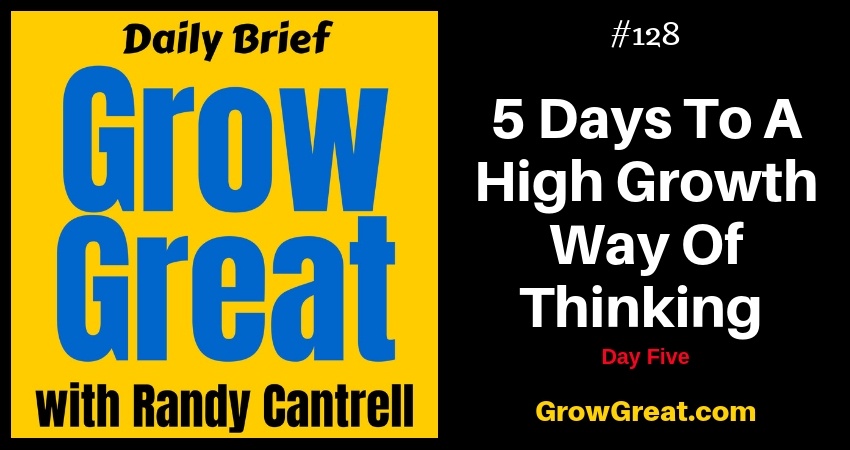Curiosity Killed The Cat, But It Fuels The Entrepreneur – Grow Great Daily Brief #132 – January 10, 2019
Podcast: Play in new window | Download (Duration: 9:25 — 9.1MB)
Subscribe: Apple Podcasts | Spotify | RSS | More
Dr. Diane Hamilton has a new book coming out, Cracking The Curiosity Code.
“Curiosity is important in all aspects of our lives because it opens us up to our desire to experience things. As we become more curious, we find things that make us happy, energize us, and create new opportunities and experiences at home and at work.” – Dr. Diane Hamilton
My friend Leo Bottary and I recorded a conversation last year with Diane about the power of curiosity. It is THE thing that can fuel our desire for growth, innovation, and creativity.
Curiosity has many enemies. Chief among them may be ego and pride. So many entrepreneurs are busy posing and fronting, hoping the rest of us think they’re all that and more. What with so many people tossing around the monikers “thought leader,” or “expert.” Self-appointed titles intended to impress depict the person likely unable to foster creativity because of their own self-importance. Smartest guy in the room syndrome and all that.
As I’ve worked with leaders over the last decade it’s become obvious to me that the most effective leaders just don’t roll that way. Instead, they’re often quick to point out the people on their team who they feel are critical to the organization’s success. Most often they naturally give credit to people they genuinely feel are doing what they often call “the real work.”
Additionally, these top-notch leaders pride themselves on finding, hiring and retaining people smarter than they perceive themselves to be. But there’s a reason behind it. They’re curious to know more. To know what they don’t yet know. To learn from others.
The curiosity that killed the cat could have been anything. Seeing a dangling electrical cord, unaware of the danger. Chasing a bird across a busy street, oblivious of the oncoming car. The curiosity of the cat isn’t likely driven by the quest to learn or grow, but rather for a more self-indulgent reason. To get what the cat wants. To serve self.
Entrepreneurs bent toward finding success and figuring it out are compelled by something more lasting. Something more powerful.
Learning. Understanding. Growth.
LUG. Why not, right? You’ll remember it.
Victory as an entrepreneur requires high doses of LUG. And it takes time to accomplish. It’s not for the faint of heart or the impatient.
I realize every entrepreneur or aspiring entrepreneur wants the easy 30-day version of victory. We’d love to find the Rosetta Stone of business building. The key to unlocking the hidden fast secrets that can help us.
Truth is, learning takes time. Understanding, too. And growth? Well, growth, once we have learning and understanding, is hard because it involves doing something with what we’ve learned and what we now understand. That’s why curiosity is so crucial. Without it, you’ll stop. You’ll quit. You’ll think, “I’ve got this.” Or, “I know enough. No need to know more.”
It’s like saying, “Okay, I’ve lived long enough. I’m done!” (which I hope you’re not saying to yourself; if so, I’d urge you to talk to somebody right now because you’re not thinking clearly enough)
Curiosity isn’t some rampant discontentment. Rather, it’s an ongoing quest for its own sake. LUG is the process and the result. Like the mountain the mountaineer, you do it because you can. Because you know it’ll make you better. And because it’ll also be fun, and very rewarding.
Besides, you never know where it may lead.
A CEO brags that he never reads. “I’m too busy,” he says. He shows off his calendar where every possible minute seems filled. People close to him lament how he dominates every meeting. Says one direct report, “The only time he asks a question is to intentionally put somebody on the spot.”
The company sales are flat, trending down slightly. They have been for almost 2 years now.
Turnover is high, especially among the leadership team. When asked about the historical performance and the most recent downward trend, the CEO bristles, “We’ve got to have salespeople who can get the job done. Our management is too soft.”
He’s got it all figured out. So he thinks. He’s not curious at all. About much of anything. He’s too smart for his own good and too smart for the good of the company. I’m sad for him. And for his employees.
You’ve likely seen that story over at Entrepreneur.com entitled, “That Time Jeff Bezos Was the Stupidest Person in the Room.”
It’s pretty funny and insightful. It happened in 1995 in Seattle when Amazon just started.
“We were packing on our hands and knees on a hard concrete floor,” Bezos recalled. “I said to the person next to me ‘this packing is killing me! My back hurts, it’s killing my knees’ and the person said ‘yeah, I know what you mean.'”
Bezos, our hero, the entrepreneurial genius, the CEO of a now 600,000-employee company that’s worth around a trillion dollars and one of the richest men in the world today then came up with what he thought was a brilliant idea. “You know what we need,” he said to the employee as they packed boxes together. “What we need is…kneepads!”
The employee (Nicholas Lovejoy, who worked at Amazon for three years before founding his own philanthropic organization financed by the millions he made from the company’s stock) looked at Bezos like he was — in Bezos’ words — the “stupidest guy in the room.”
“What we need, Jeff,” Lovejoy said, “are a few packing tables.” Duh.
So the next day Bezos — after acknowledging Lovejoy’s brilliance — bought a few inexpensive packing tables. The result? An almost immediate doubling in productivity.
It never pays to be the smartest guy in the room. It only means you’re in the wrong room.
Curiosity requires an interest in others. Interest in what they think, how they feel and what they know. You know what you know. And you know what you feel. The power is found in learning, understanding and growing in the things you don’t yet know.
Open up your mind. And your heart. Swallow your pride and suppress the ego that’s preventing you from LUG.
Or keep your mind and heart closed. Maintain pride and ego. Limit LUG (learning, understanding, growth) and enjoy being much, much less than you’re capable.
No, you’re not going to do that because you’re subscribed to this podcast.
Curiosity won’t kill you, but a lack of it just might.
Be well. Do good. Grow great!

P.S. Next week I plan to do some shows – maybe every show next week – on leadership. Would you email me what you’d like to hear about leadership? Tell me what leadership challenges you’re facing? Email me: RandyCantrell [at] gmail [dot] com
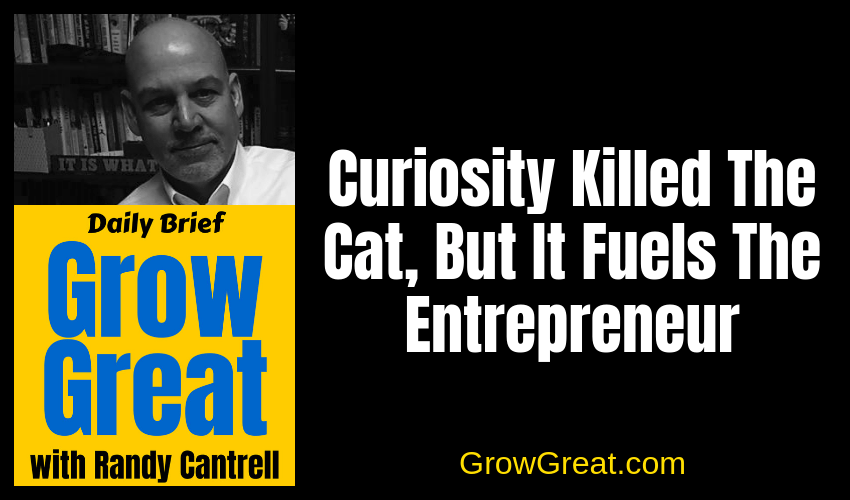
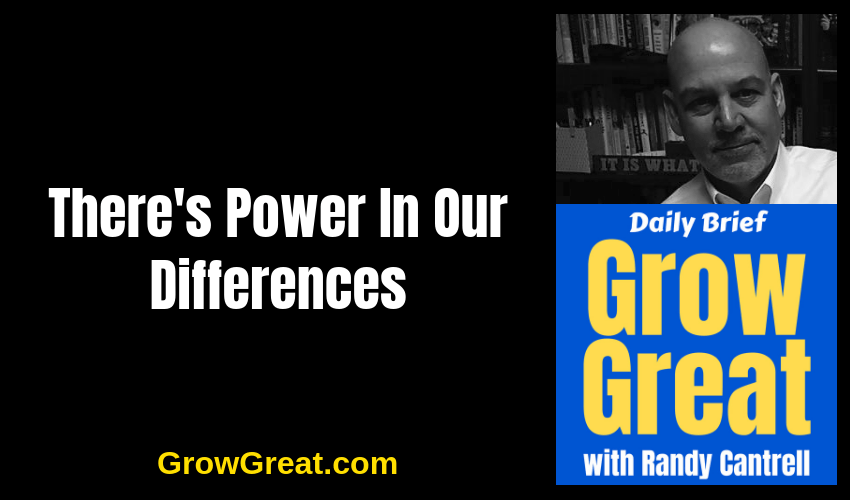
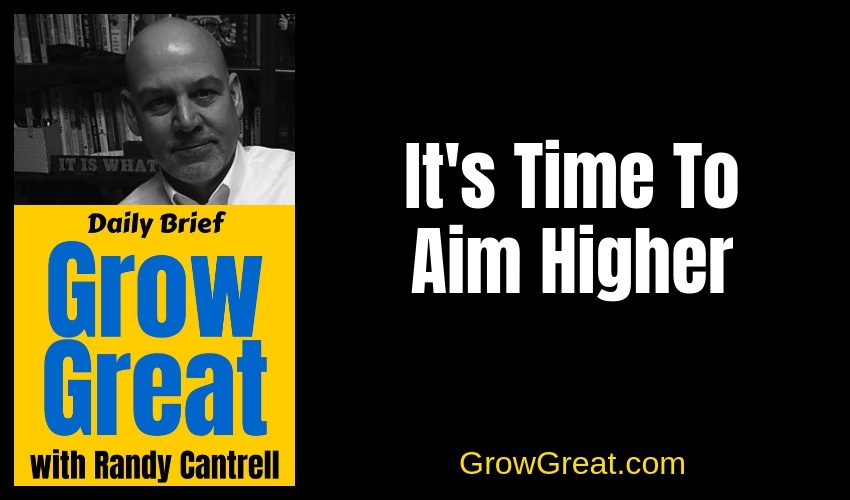

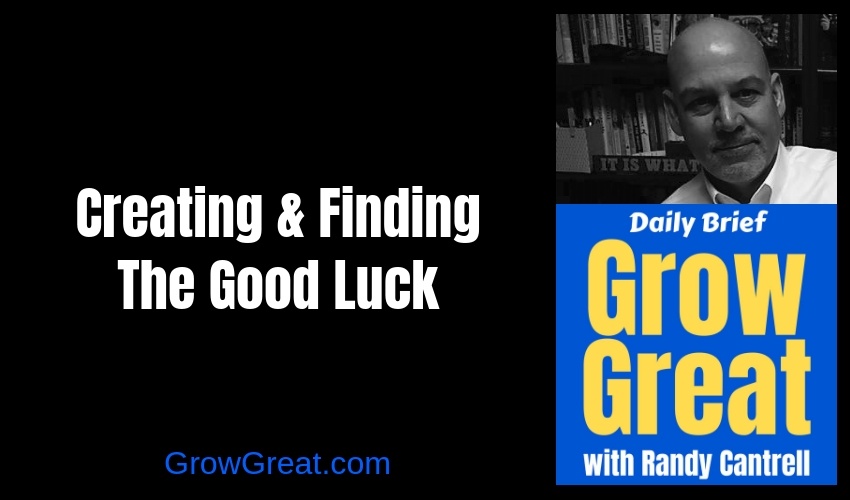
 In 2004 a little book was published that captured my attention as I strolled through the bookstore on my weekly pilgrimage. The book was entitled, “Good Luck: Creating the Conditions for Success in Life and Business” by Alex Rovira and Fernando Trias de Bes. In spite of the fact that I’m not terribly fond of the business fable, I bought it. It’s a quick read. But the lessons are powerful, especially in a culture where it’s easy for people to feel entitled or victimized.
In 2004 a little book was published that captured my attention as I strolled through the bookstore on my weekly pilgrimage. The book was entitled, “Good Luck: Creating the Conditions for Success in Life and Business” by Alex Rovira and Fernando Trias de Bes. In spite of the fact that I’m not terribly fond of the business fable, I bought it. It’s a quick read. But the lessons are powerful, especially in a culture where it’s easy for people to feel entitled or victimized.